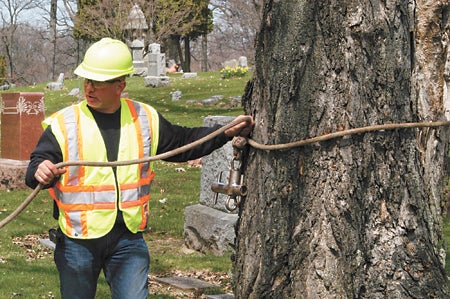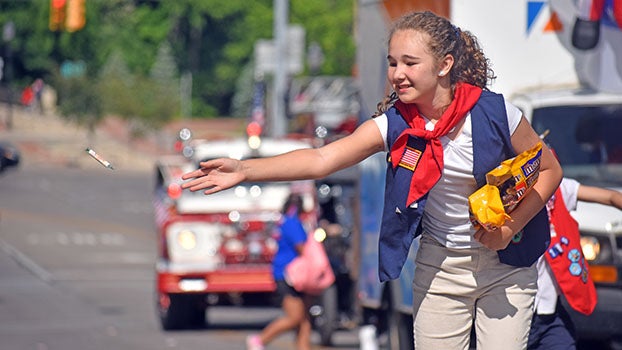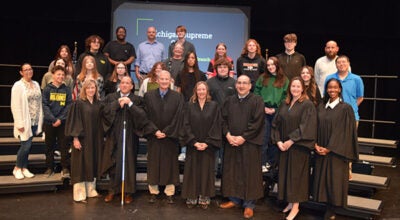Tree lore shared on Arbor Day
Published 6:42 pm Sunday, April 28, 2013

Dan Williams of Williams’ a-1 Expert Tree Service on M-51 South demonstrated pruning dead limbs with a chainsaw and bucket truck with a 72-foot boom. (Leader photo/JOHN EBY)
What’s the difference between a pine and a spruce? Mayor Donald Lyons wondered.
“It’s the difference between your family and mine,” Master Gardener Carole Bettig of Sister Lakes said during her Arbor Day presentation. “We’re both human. To say they’re all conifers and evergreens is about where similarities stop. Tamarack is regarded as a conifer in some respects, but loses all its needles.”
Dogwood Tree City USA Committee enjoyed rare gorgeous April weather Saturday for the annual observance near Ed Darr’s final resting place at Riverside Cemetery.
A tree talk would not be complete in Dowagiac without touching on dogwoods, which look like ground-level fireworks at the cemetery in spring and inspired Dogwood Fine Arts Festival.
“There are two longer and two shorter petals on a dogwood blossom,” Bettig said. “The true flower is that seedy-looking green thing. You can always tell a dogwood because branches sweep up. White ones are planted most widely. They’re kind of fussy. They don’t like wet springs or hot, dry summers, but take well to pruning. It’s a lovely tree. If you can only plant one, plant a dogwood.”
Cornelian cherry, or yellow-flowered dogwood, is often mistaken for forsythia.
Kousa dogwoods bloom in August. Tri-color beeches have variable leaves of green, burgundy and a margin of white. “It’s hard to make them survive when they’re growing and hard to kill them when they’re dormant.”
Bettig discussed different kinds of Christmas trees, including tangerine-scented concolor firs, wildflowers — deep-shade bloodroot supplies red dye — and passed around a buzzard feather that looked like a quill pen.
Councilman Bob Schuur, who attended along with Mayor Lyons and Mayor Pro Tem Leon Laylin, served on the cemetery board along with the late Wanda Franklin, in whose memory a white dogwood will be planted with a plaque.
Dan Williams and Williams A-1 Expert Tree Service demonstrated tree planting and pruning dead branches with a bucket truck.
Junipers grow slowly at first, but can live hundreds of years under right conditions. Its blue berries are used to make gin.
“Another of my favorites is Canadian hemlock. It’s a conifer, which means it doesn’t lose its needles. It’s a sweet tree because it takes to pruning and prefers shade. Juneberry is a deciduous tree that grows wild at the edge of woods. They can get 30 to 40 feet tall.
“It’s the first tree to bloom in the spring. In June, you have red berries that look like cherries. Birds and wildlife love them. It’s also known as service berry because pioneers couldn’t bury the dead in solidly frozen ground until it bloomed.”
Redbuds bloom “in no time at all with magenta-pink, but it will up and die — same with a Bradford pear — so don’t get too attached.
“Both George Washington and Thomas Jefferson alluded to planting redbuds in their yards.”
Hawthorns are “nasty,” with needlelike thorns. “Wonderful food for birds,” though. “We have about 400 in Michigan. Some have no thorns, some have a lot,” Bettig said. “They’re also known as wild crab apples. They’re from the rose family and are planted by Cass District Library.”






